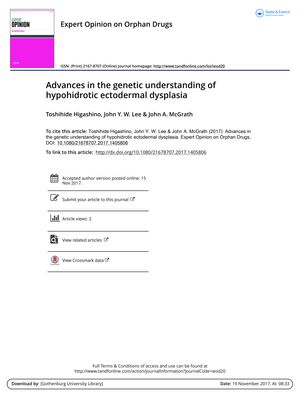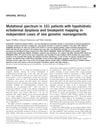Advances in the Genetic Understanding of Hypohidrotic Ectodermal Dysplasia
November 2017
in “
Expert opinion on orphan drugs
”

TLDR Scientists now better understand the genetics of hypohidrotic ectodermal dysplasia, leading to more accurate diagnoses and potential new treatments.
The document from November 26, 2017, provides an overview of the genetic basis and clinical management of hypohidrotic ectodermal dysplasia (HED), a condition affecting approximately 7 per 10,000 live births and characterized by abnormalities in teeth, hair, and sweat glands. It identifies mutations in the EDA, EDAR, EDARADD, and WNT10A genes as the primary causes of HED, which have enabled improved diagnostic precision and DNA-based prenatal diagnosis. The article also discusses the clinical testing of recombinant proteins targeting the molecular pathology of HED, with ongoing efforts to develop definitive molecular therapies. Management strategies for HED include preventive measures for hyperthermia, dental interventions, and patient support groups. Additionally, the document notes the heterogeneity of phenotypes associated with these genetic mutations and the need for further research to establish clear genotype-phenotype correlations.










